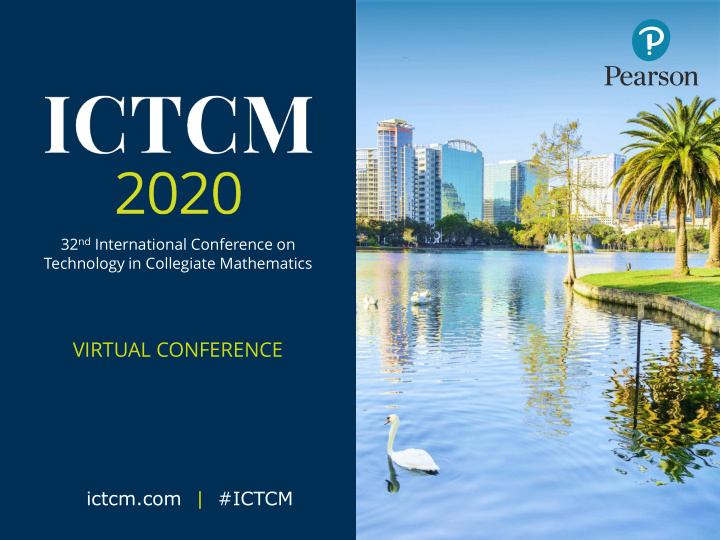



32 nd International Conference on Technology in Collegiate Mathematics VIRTUAL CONFERENCE ictcm.com | #ICTCM
MYTH OF THE DIGITAL NATIVE DR. HOVIS JOSHOVIS@GMAIL.COM MID AMERICA NAZARENE UNIVERSITY
PROOF?
DIGITAL NATIVE: DEFINITION BY PRENSKY 2001 These students have spent their entire lives surrounded by technology. They are “native speakers” of the technology of computers, cell phones, video games, and the internet. M. Prensky Digital natives digital immigrants On the Horizon NCB University Press, 9 (5) (2001), pp. 1-6
DIGITAL IMMIGRANT: DEFINITION BY PRENSKY 2001 Born before 1980 “Speak an outdated language of the pre - digital age” M. Prensky Digital natives digital immigrants On the Horizon NCB University Press, 9 (5) (2001), pp. 1-6
MYTHS What do our digital native students use technology for?
WEALTH AND TECHNOLOGY Among people 50 and under, there was no relationship between age and Internet know-how. Higher income and higher education are related to higher T ech-savvy. E. Hargittai, A. Hinnant Digital inequality differences in young adults' use of the internet Communication Research, 35 (2008), pp. 602-621
WHAT IS THE PROBLEM? There are students who don’t understand technology We need and are expected to teach with technology Some students need to learn how to use technology.
YOU ARE HERE You know this problem exists but what solutions are there? Will the problem disappear if we just quit teaching and allow digital natives to take our jobs?
NO ASSUMPTIONS Never assume a student is capable of using technology
NO ASSUMPTIONS Always check that technology has not changed since last semester.
BABY STEPS Try to slowly introduce technology into the course.
LIMIT TECHNOLOGY HOW MANY DIFFERENT TECHNOLOGY TOOLS DO YOU USE? • Course Platform • Communication -Web Chat / Email • T extbook Platform • Cell phone Apps – • Calculator Kahoot / Quizlet • Desmos • The computer itself! • PowerPoint / Word / Excel
USE THEIR TECHNOLOGY Large group multi choice quiz games: Kahoot Poll Everywhere Quizlet
E-MAIL How many inappropriate e-mails have you seen? Teach when to use text slang. Dr. or Mr. never first name
THROWBACK: STUDENTS USE TECHNOLOGY THAT IS ABOUT THEM When did you really know your subject? T eaching through technology allows students to use technology on their terms. The first weeks discussion could be on how they used the technology this week including the tricks and videos they found helpful. Instead of you trying to figure out how to help others you have 30+ students each semester pooling ideas on what worked and what didn’t work. (Grouping the Windows and Apple users separately (kicking out any chrome users))
CHROME BOOKS ARE A PROBLEM Address the fact that Chromebooks will not be as robust and may not be able to do what the course needs. WEEK 1!
ASSUME FAILURE T echnology breaks! Lesson one save, which is almost automatic. What tools do you need to troubleshoot if it’s hardware, local network, or internet. Who do you report the issue to? Have a backup plan. Weekend warriors need to check technology early.
WHO IS YOUR VILLAGE When you don’t know, do you know who does? List on your course page: T extbook tech support College tech support Instruct when to call them before calling you
CHANGE Use technology to collect data on what needs to change. Create a survey and ask your students about their experiences. Which technologies helped them learn and which tripped them up. CHANGE!
HOMEWORK Stop believing students can multitask.
32 nd International Conference on Technology in Collegiate Mathematics VIRTUAL CONFERENCE #ICTCM Contact Information Dr. Joshua Hovis Math Instructor Mid America Nazarene University joshovis@gmail.com
Recommend
More recommend